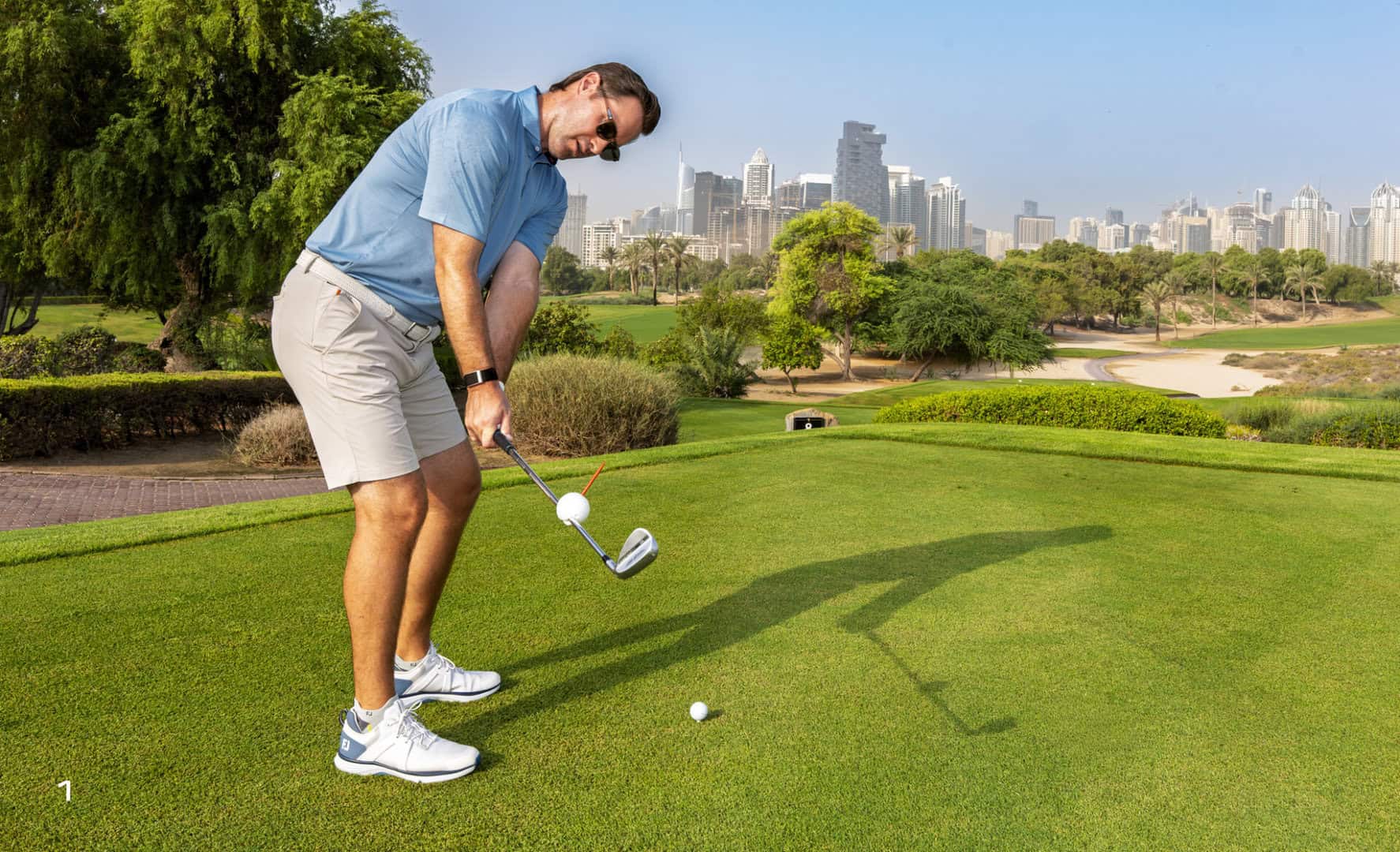
In this article I’d like to cover the importance of letting the club fall or topple in front of the hands during the downswing. (Picture 1)
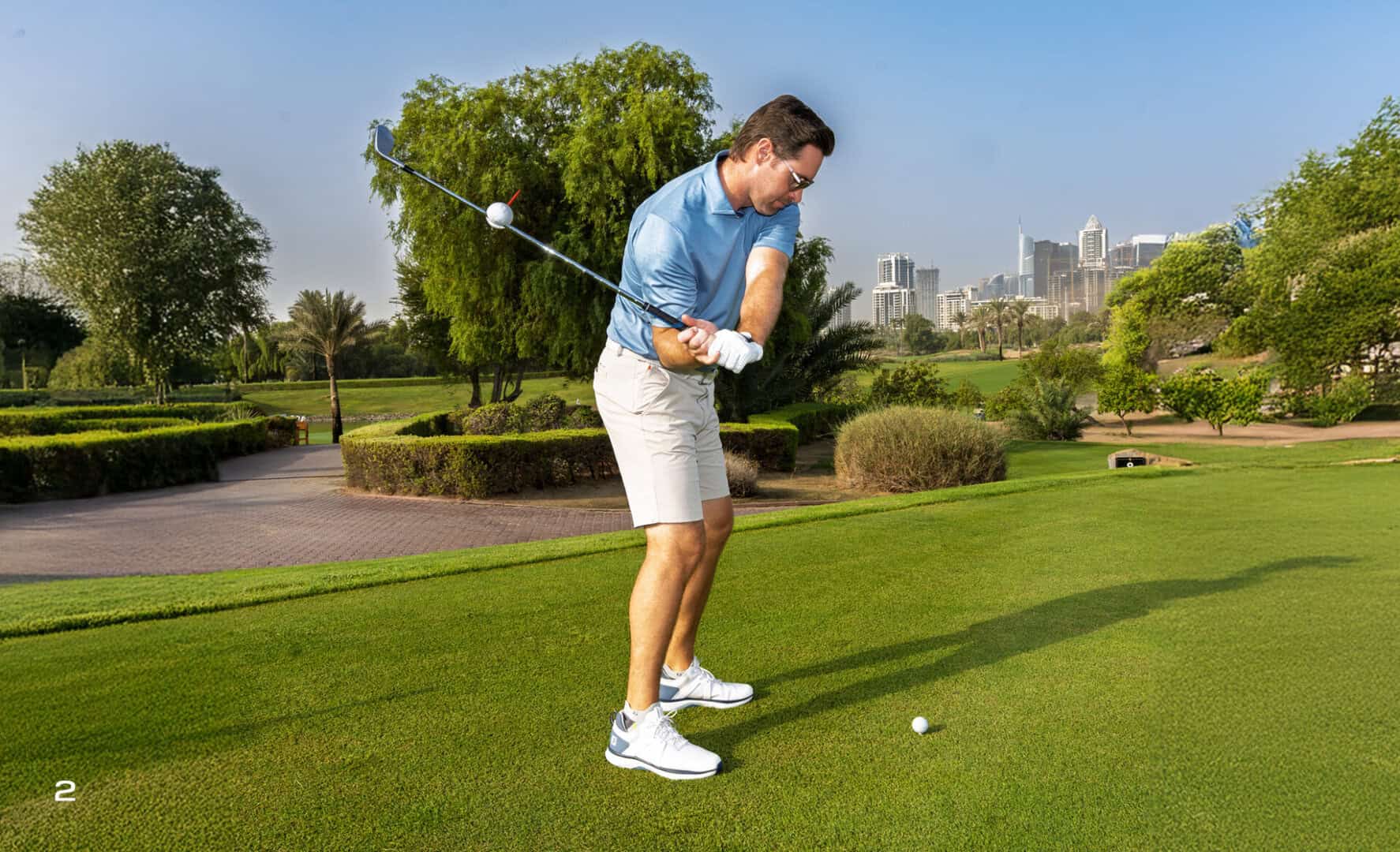
I see many players trying to let the club fall behind the hands (shallow) or hold the club for as long as possible behind the hands (lag) as they initiate the downswing. (Picture 2)
From this position the club can easily get trapped behind and requires an extremely athletic move with the body and wrists to return squarely to the ball.
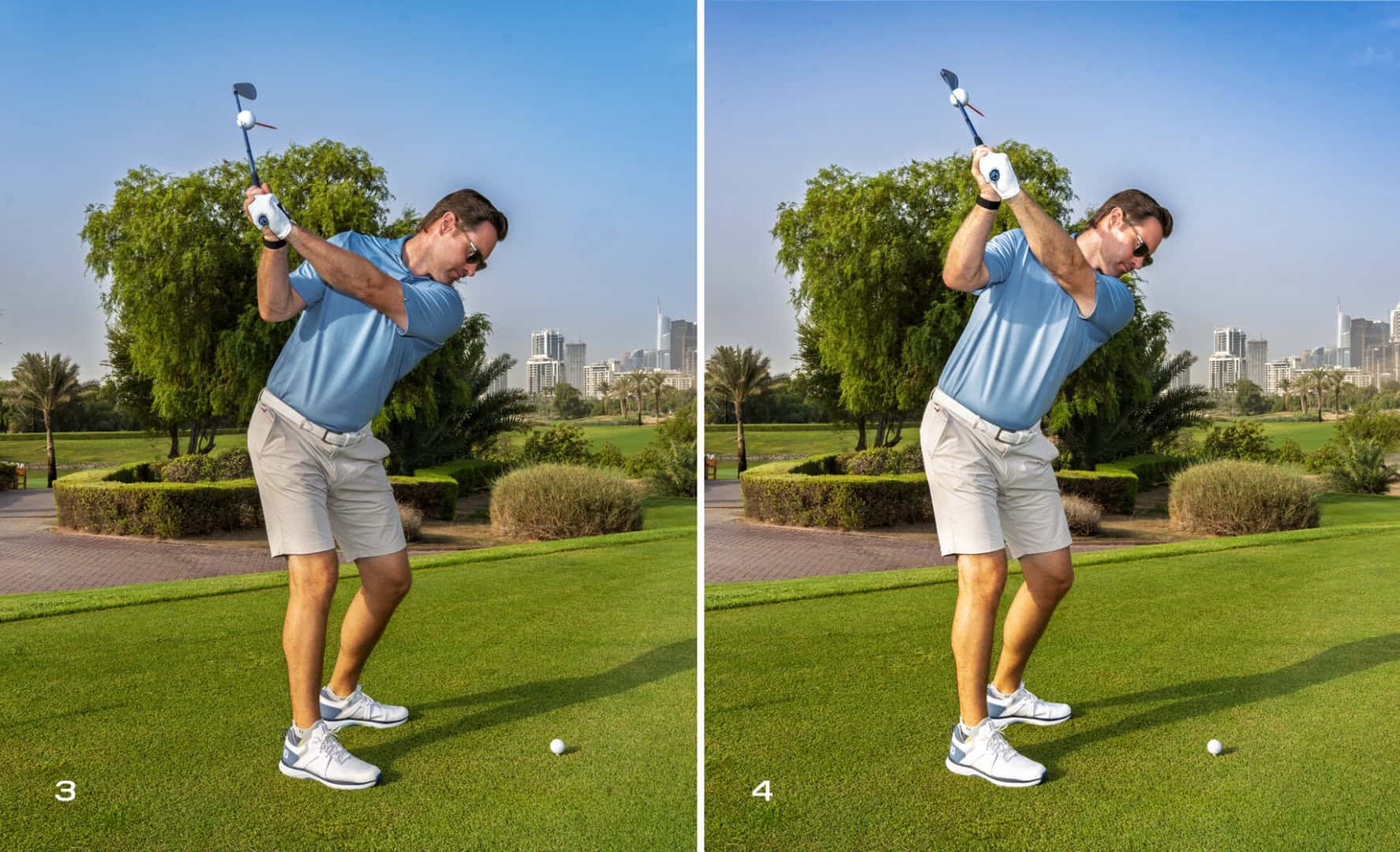
First lets let the shoulders work up rather than in during the backswing. We describe this upward movement of the shoulders as loading (Picture 3) rather than an inward turning pattern (Picture 4).
Once the shoulders have loaded up within your natural range it’s easy to let them work down to initiate your downswing (transition). This downward movement of the shoulders naturally shallows the club without feeling you have to let the club head fall behind the hands.
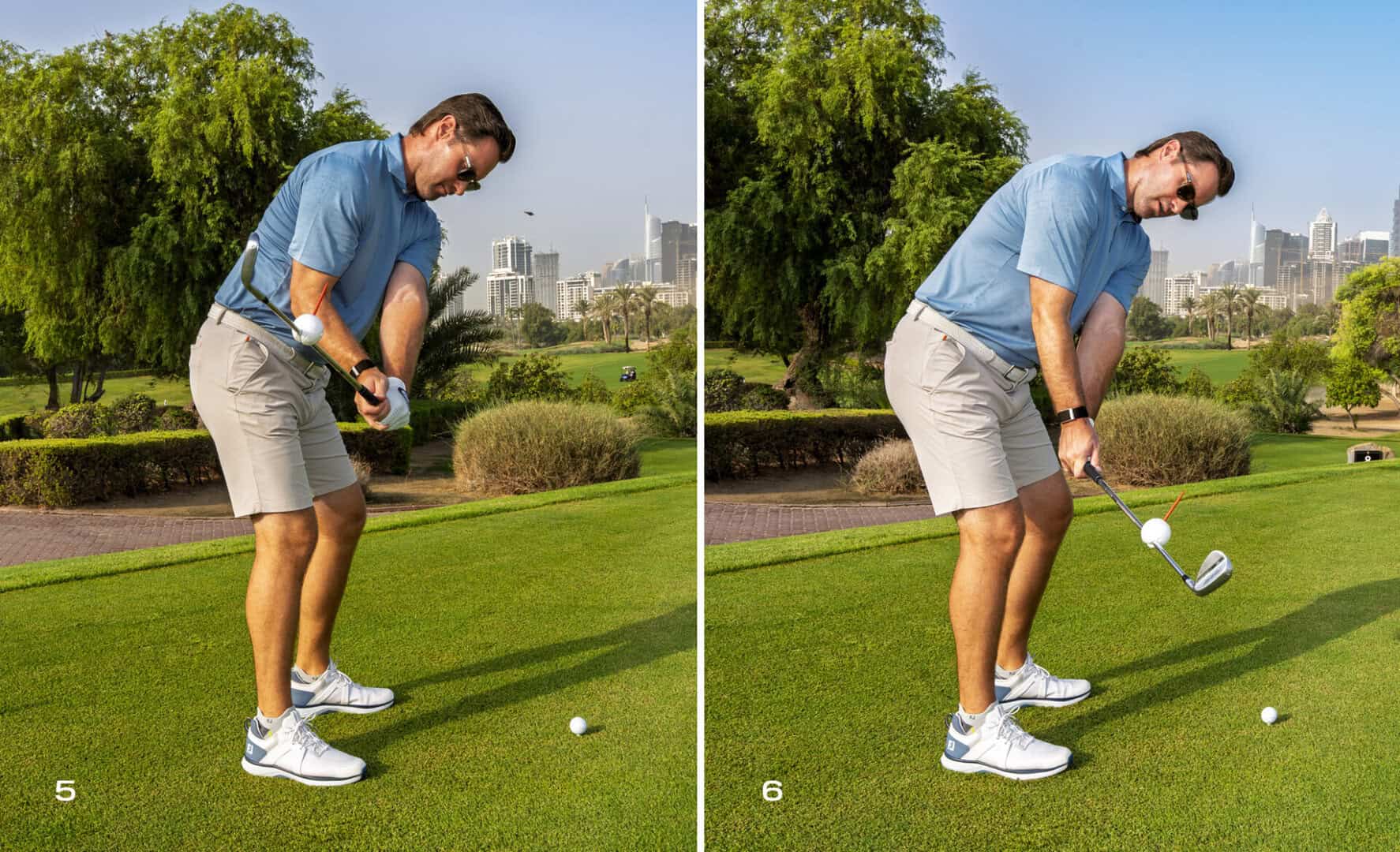
Once the shoulders have unloaded (Picture 5) you can let the club head topple out in front of the hands (Picture 6). From here you’ll be in a unrestricted delivery position where your lead side can open and stretch as the club head is transported comfortably to the back of the ball.
Practice with intention!
This ‘shoulders down and club head toppling out’ pattern will be merged when playing. When practicing you can work on them independently, the down first and the out in slow motion second. Once you feel comfortable merge them together, speed the pattern up and you start striking balls.
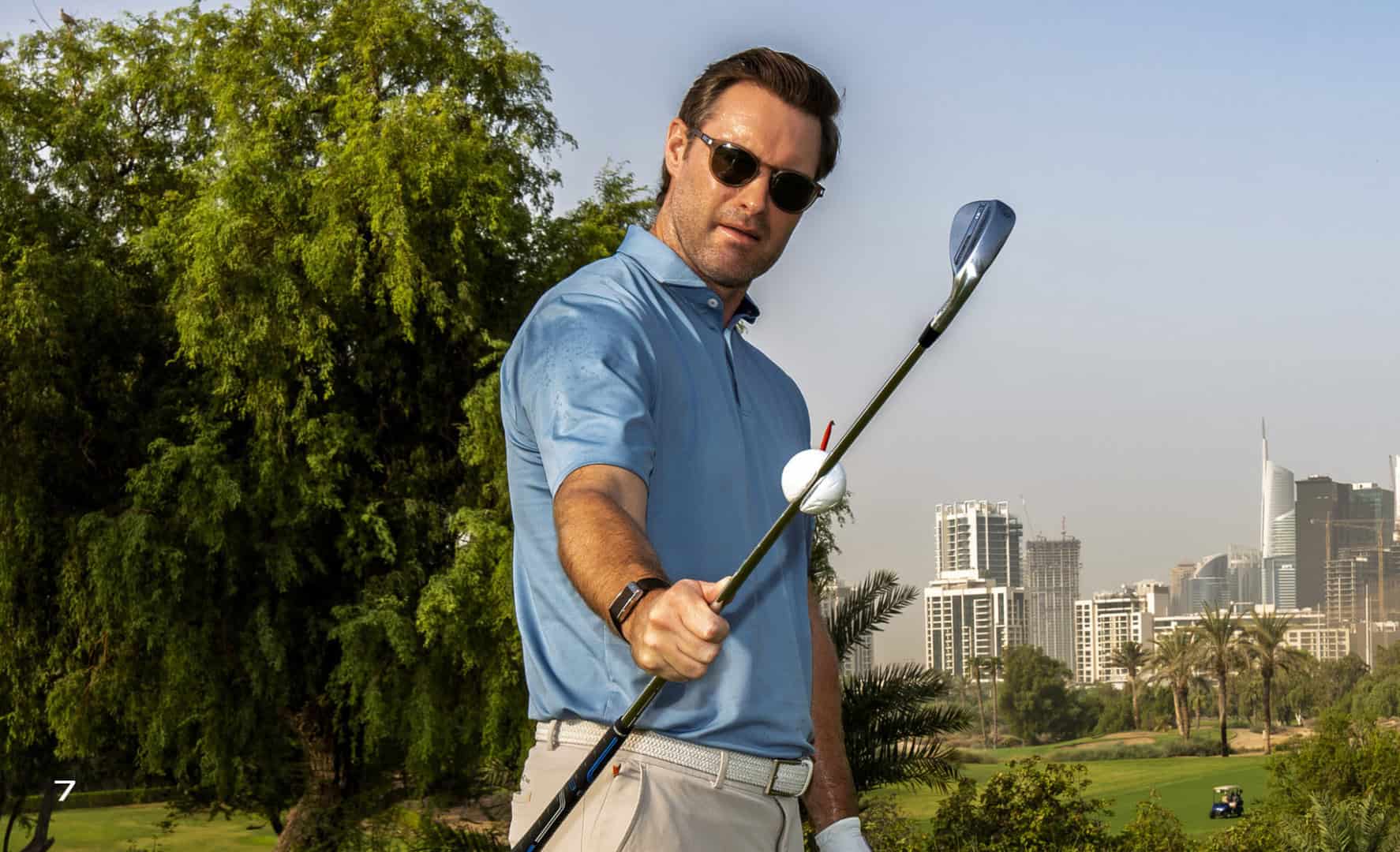
You’ll notice I’ve placed a small training aid with a red vertical on the shaft (Picture 7). This simple aid helps my students visualize the toppling out pattern we’ve discussed. It’s a torque applied to the club (positive alpha). If you want to learn more about the forces and torques there’s plenty of valuable information out there but be careful not to get to caught to much up in the science!!
I trust this drill helps you understand the downswing pattern and provides some clarity on what the head is doing relative to both your body and hands.
by Stephen Deane